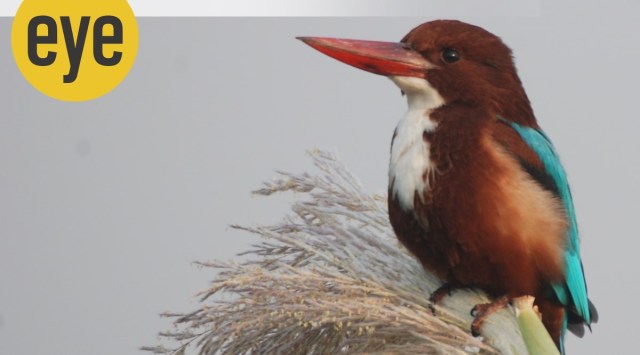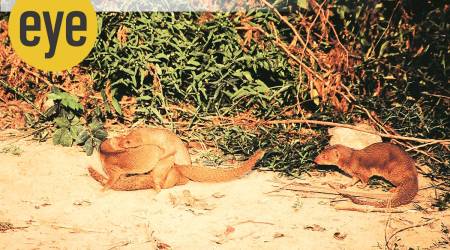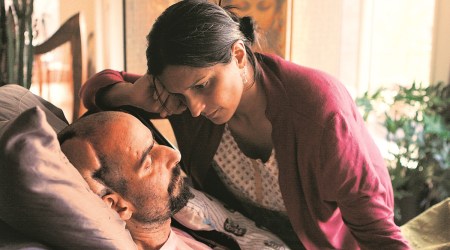How birding went from being a laidback hobby to competitive overkill
In the rush to take the best photo, the basic tenet of birding – that the interests and well-being of the bird is paramount – has been forgotten.
 A white-throated kingfisher (Credit: Ranjit Lal)
A white-throated kingfisher (Credit: Ranjit Lal)When I started birding over four decades ago, it was generally regarded as a pastime that eccentrics with too much time on their hands indulged in — something ‘altu-faltus’ did. There were those who sneered and asked, “So what kind of birds do you watch, heh-heh?”, cops who told us that if we wanted to see birds we ought to go to the chidiya ghar (zoo) and not sneak around in the thorny thickets of the Delhi Ridge on winter mornings, armed with cameras and binoculars; and others who moved away swiftly if they sensed you were about to invite them the next morning at 4.00 am to show them the delights of birding. Once, while watching great crested grebes swim blithely in a village pond near Sambhar Lake and trying to winkle out a golden oriole fluting from the massive trees around, villagers squatted silently all around me and watched me in awe, no doubt thinking me to be a fool. At the time, bird photography was tough: high-quality equipment was virtually impossible to get and very expensive; transparency film was expensive, too, so the bird-photographer fraternity almost completely consisted of professionals.
Gradually, birding as a laid back, relaxing hobby gained popularity, though twitchers still ran around like loonies once news of a rare sighting got around. The explosion really took place when suddenly top-quality optical equipment became accessible, coupled with the internet and then social media. Digital cameras meant you could take 500 shots of a bird in two minutes and do it all over again in no time. And like all explosions, this one, too, turned out to be dangerous. Suddenly, anyone with a massive telephoto lens wanted to take high-quality pictures of birds and show them to the world to ‘like’ (and, by inference, love them).
This awoke the hunting instinct in photographers. Now, news could travel like lightning, and twitchers could get from here to Timbuktu in hours. So, if something rare was sighted, the news went around like a whirlwind and soon, the poor pretty bird must have felt like Princess Diana being hunted by the paparazzi. And sadly, too often with the same result.
A bird going about its daily business — finding food for itself, or its fledglings, building a nest, or just singing – probably does not appreciate having 120 huge lenses being pointed at them by chattering, squabbling rabbles of people. Here, the basic tenet of all bird photography, and birding – that the interests and well-being of the bird is paramount – has been deleted.
I plead guilty of this crime too: trying to get that one step closer to the increasingly nervous bird, in order to get what I thought would be the perfect image. Sure, common birds such as crows, pigeons and sparrows may not seem to mind: but they do. Look at how crows sidle away from you, hop by hop, once they realise they’re under scrutiny; even sparrows keep a wary eye out. Just think: how would you like to have a hundred bazooka lenses pointed through your window as you gave your kids their breakfast before hustling them to school or while you got ready for work? Of course, some governments do this, and that’s equally disgraceful.
Birds, while building nests, feeding their ever-hungry young, serenading their partners, or dancing, or while on epic migratory journeys, are already under considerable stress. Notice how high-flying ducks, junk and whiffle once they spot bazooka lenses pointed at them from marsh reeds? Or how a red-wattled lapwing will give you the broken-wing display if you get too close to its nest or eggs, or even dive-bomb you while shrieking hysterically?
In several countries, nest photography is banned, except for specially licensed photographers. In India too, some sensible birding e-groups have banned nest photographs from their sites. But unfortunately, it’s become an extremist, cutthroat competitive killer ‘sport’. Worse, there are those specimens who will not only harass the bird on the nest, but then go ahead and destroy the nest and eggs so no other photographer can get similar images. This is nothing but criminal. When there’s a group of such lovelies on the prowl, mob mentality takes over as they shove and jostle each other in order to get their image. These go straight on social media to garner ‘likes’ and encourage more such obnoxious behaviour from others.
Just visit a bird sanctuary or national park and you’ll see what I mean. In some places, unfortunately the bird guides – who know all about bird life in the place and where the rare gems are ducking down – will, for a hefty price, of course, lead photographers on to them for the kill.
Of course, you can take excellent pictures of birds, even at nests, but you do need to invest a vast amount of time and do research as if for a double Ph.D. – something no commando-clad birder bothers with. Or you can go off to the Antarctic and get slapped by a penguin.




































